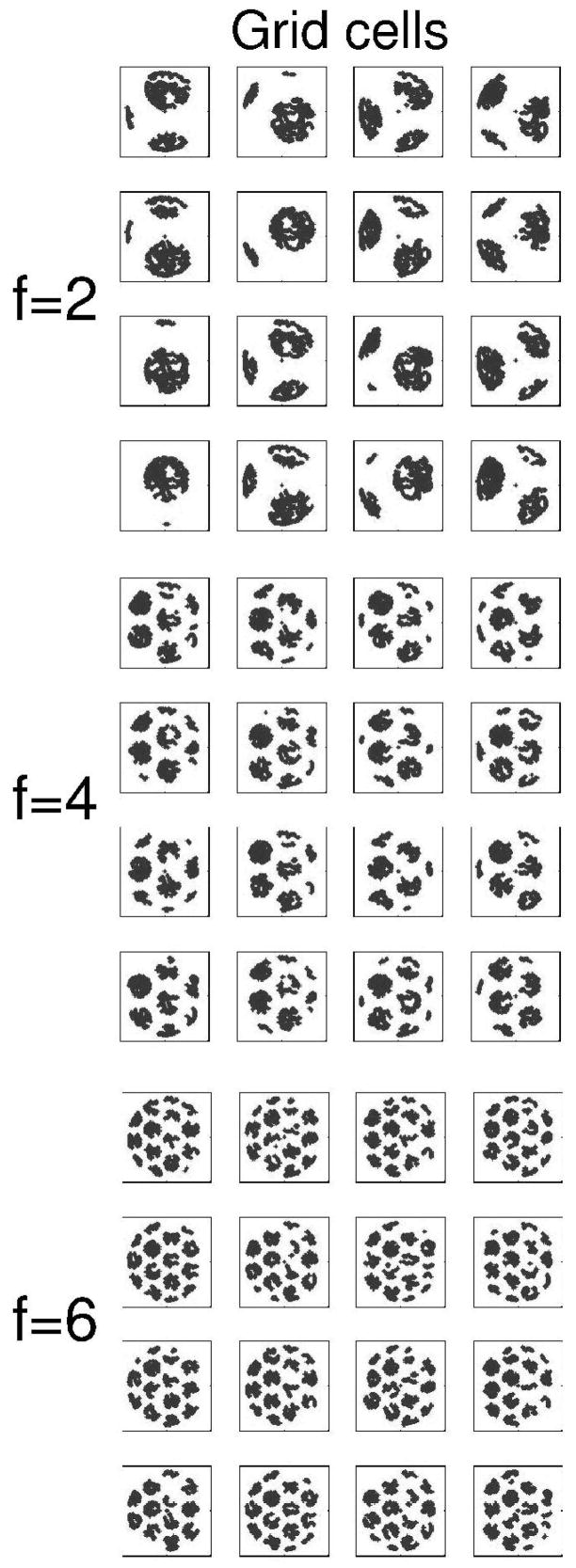Figure 2.
Example of grid cell firing in the simulation. The model used a population of 75 grid cells during running on a circle task. The spatial periodicity of grid cell firing is illustrated in a smaller population of 48 grid cells during random foraging in an open field environment. Each square shows the pattern of firing of one simulated grid cell during the same open field trajectory. Firing fields are made up of many gray dots indicating the location of the virtual rat when the grid cell fires. Grid cells differ by baseline frequency in top (f=2), middle (f=4) and bottom (f=6) groups. Within each group, grid cells differ by initial phase of oscillation, with phase φ=0, π/2, π and 3π/2. These simulations use the same orientation of ϕ=0.

